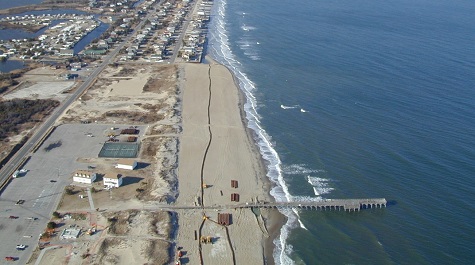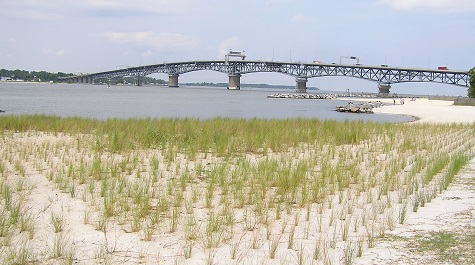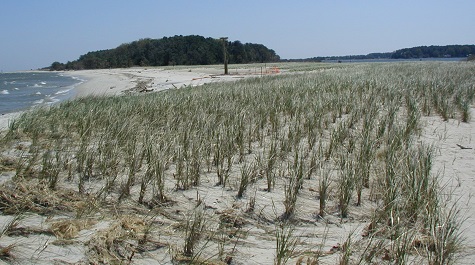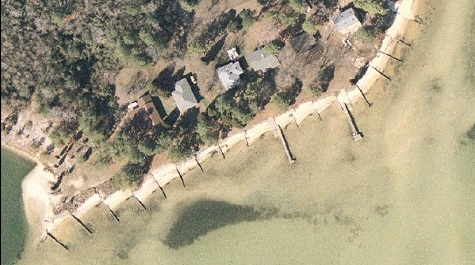Beach Nourishment & Dune Restoration
Beach nourishment is placing clean sand on an existing beach to raise its elevation and increase beach width. A wider beach improves storm protection by increasing the distance between the upland bank and waves. Beaches are dynamic shoreline features that are constantly shifting in response to predominant wind and wave direction. Tolerance of these natural changes is required for the practice to be acceptable.
Suitable Sites
- Gently sloping beaches with minor upland erosion
- Public or private beaches in close proximity to channel dredging
- Established groin fields with sand beach present
- Where sand migration will not interfere with navigation or upland land uses
Guidelines for Beach Nourishment
- Clean sand must be free of trash, toxics, land clearing debris, invasive species
- Potential sand sources include upland sand pits with truck transport, bank grading material, dredged material from nearby channel
- Regardless of sand source, perform grain size analysis for existing and proposed sand source
- Stabilize beach area above regular high tides with dune vegetation
- Consult with local Coastal Primary Sand Dune and Beaches Act authority




